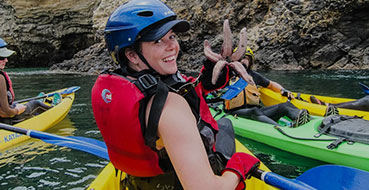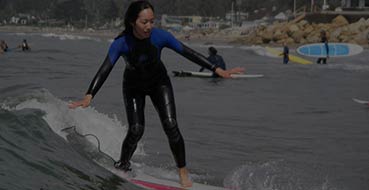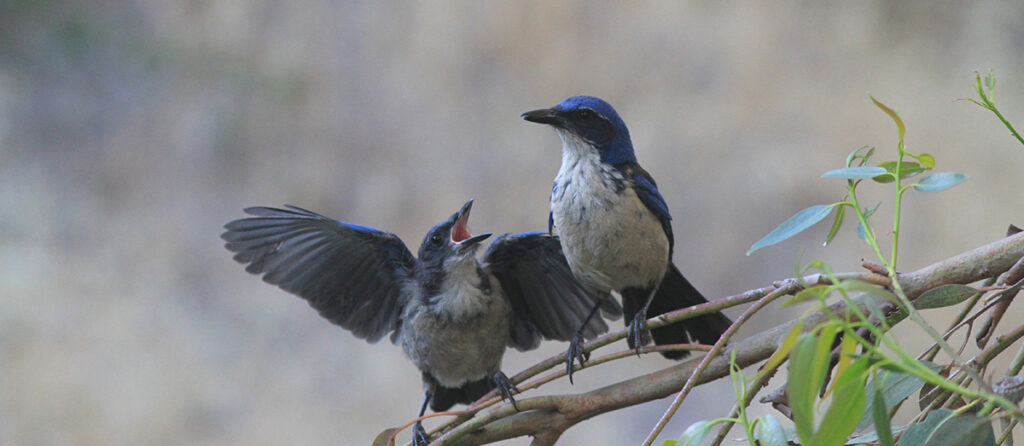
Bird watchers travel from all corners of the world to get a glimpse of the rare Island Scrub Jay. Photo by Chuck Graham.
I followed a flash of blue in the dense oak woodland while hiking a side canyon within Scorpion Canyon on Santa Cruz Island. The lone endemic island scrub jay was doing what it does best, continuing to restore island oak groves across the mountainous isle.
Before or after a kayak tour with Santa Barbara Adventure Company, guests are always pointed in the right direction for a hike, or the best place to spot an island fox. There are those though, that want a glimpse at one of the rarest birds in the world, the island scrub jay. Bird watchers from all over the world come to Santa Cruz Island to see one of the most ecologically important avian species in the world.
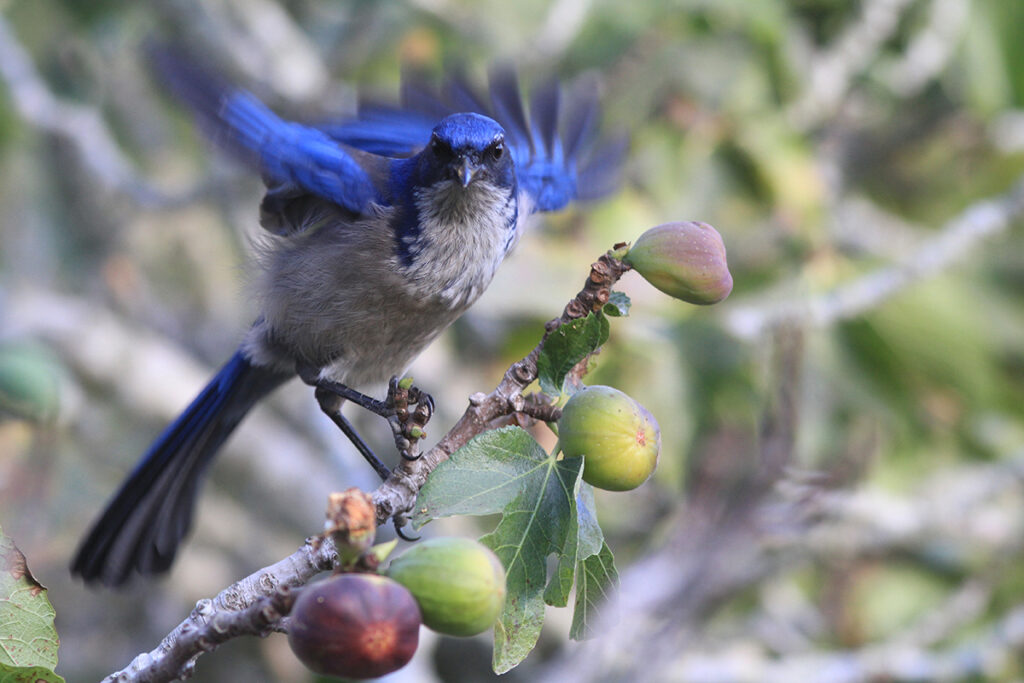
Island Scrub Jay spreads its wings on a fig tree. Photo by Chuck Graham.
The island scrub jay is one of the many reasons why Channel Islands National Park is also known as “the Galapagos Islands of the north,” boasting rich biodiversity that exists nowhere else on the planet.
One of the Rarest Birds
Seeing an island scrub jay isn’t always a guarantee. Hearing them beforehand is more likely. Typically, it’s a harsh, rising shek-shek-shek throughout the narrow canyons shaded by island oak trees, manzanita, ironwood trees, and bishop pines. Having said all that, island scrub jays are in the corvid family, so like crows and ravens, they are equally as curious. Don’t be surprised if one of these brilliant blue birds’ lands right next to you.
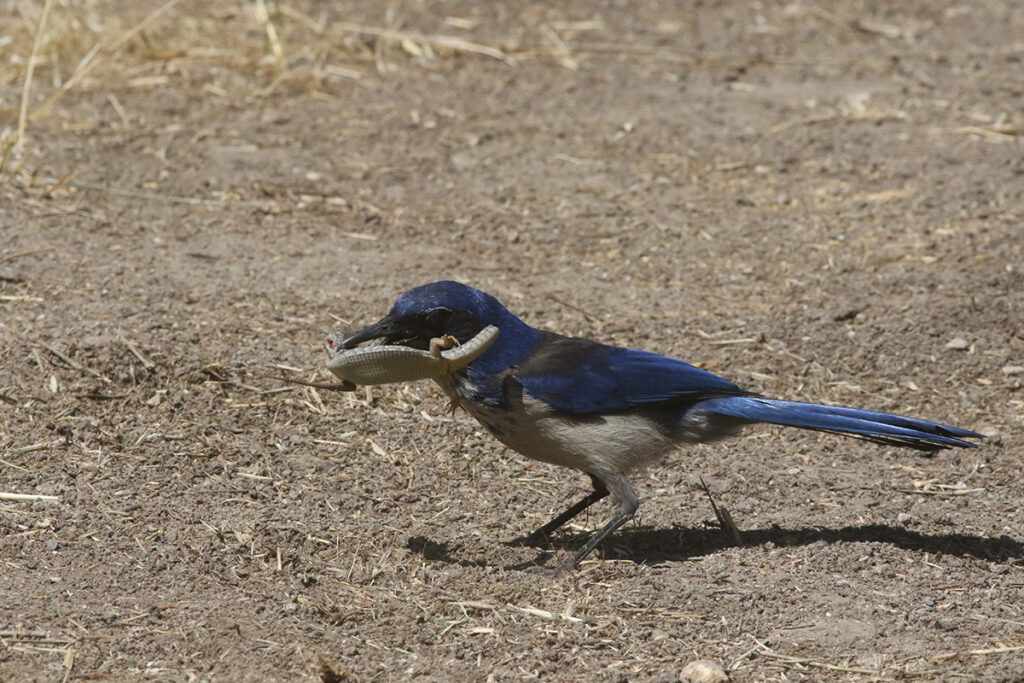
Island Scrub Jays eat acorns, insects, spiders, snakes, lizards, mice, and other birds’ eggs and nestlings.
Island scrub jays have the smallest range of any bird in North America. There are approximately 2,000 jays on Santa Cruz Island. The windswept island is the only place in the world where island scrub jays exist. None of the other California Channel Islands have populations of jays, although neighboring Santa Rosa Island once did.
The western scrub jay of the California mainland is the cousin of the island scrub jay. Due to a lack of competition, abundant food sources, and isolation the island scrub jay has evolved over thousands of years into its own species. It’s enabled it to grow to be a third size larger than its mainland counterpart, a natural phenomenon known as island gigantism. Island scrub jays are also a deeper and prettier blue than the western scrub jay, and they possess a larger, beefier beak.
Eco Engineers
Island scrub jays love their acorns, and that’s a great thing for the ecology of Santa Cruz Island. Biologists from the Smithsonian have told me that the island scrub jay is directly responsible for the recovery of oak woodland habitat across the craggy island. Among biologists in the field, they are known as “Cache Kings,” or “Eco Engineers.”
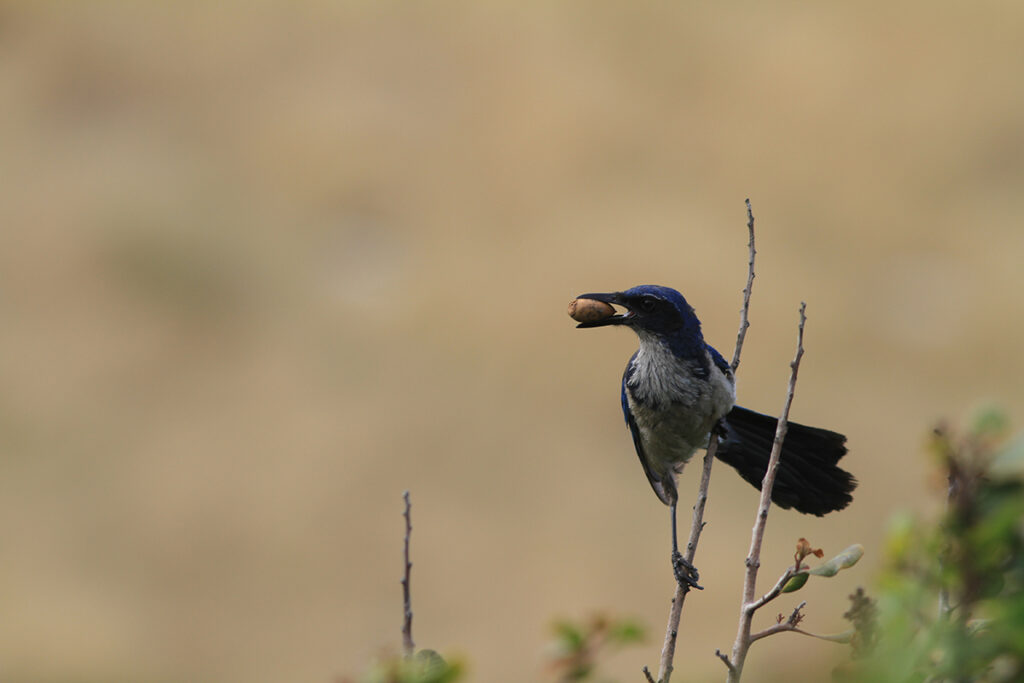
The island scrub jay is directly responsible for the recovery of oak woodland habitat across Santa Cruz Island.
One adult island scrub jay caches an incredible 3,500 to 6,000 acorns a year. When considering the entire island scrub jay population, that’s a whole heck of a lot of acorns. They also innately cache the acorns point down, so they germinate across the island ecosystem. It doesn’t end there though. Island scrub jays are also known to plant those acorns upslope, which means island oak trees reach the highest serpentine ridgelines of the largest isle off the California Coast.
Fog drip is the largest water input across Channel Islands National Park. Surprisingly, it’s not rain; although rain plays a hand in the unique island biome. However, fog drip is more consistent, and on some parts of the northern chain it feels and looks like rain.
As that fog sweeps and billows across Santa Cruz Island, it allows those newly cached acorns to germinate, and over time that moisture drips from the leaves and importantly continues to sustain groundwater, replenishing many of the creeks that flow down steep, narrow canyons and eventually reaches the ocean.
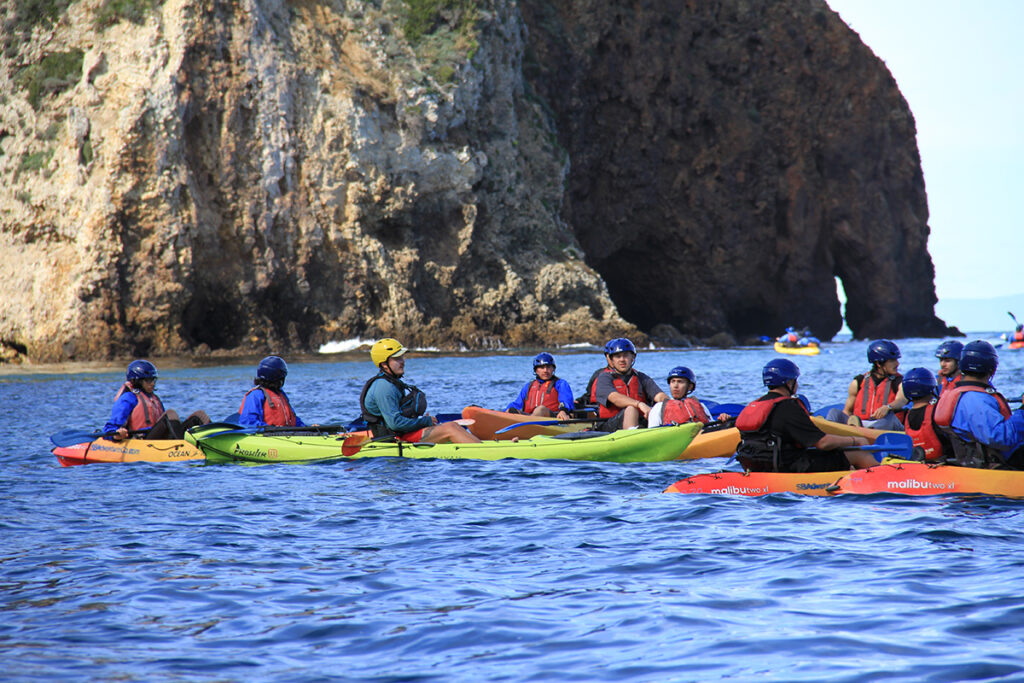
In addition to bird watching, Santa Cruz Island offers a variety of outdoor recreation activities including sea cave kayaking.
Whether the island scrub jays know it or not, they play a vital role in the ecology of Santa Cruz Island. So, after finishing your kayak trip around Scorpion Anchorage, take a stroll up Scorpion Canyon to see one of the hardest-working birds in North America.

Blog contributed by:
Chuck Graham
